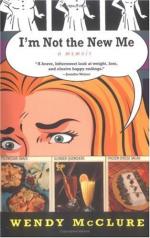For all this, it is hardly superlative to say that, since art began, no man has ever felt the exquisite and subtle harmony of line to the same degree as Ingres. Naturally the best examples of this, his greatest quality, are to be found in his rendering of the nude human form; and from the “Oedipus and the Sphinx,” of 1808, to “La Source,” of 1856, both of which are now in the Louvre, he returned again and again to its study, producing each time a masterpiece. His portraits, again, are most masterly, occasionally rising through sheer force of rendering each characteristic trait of his model (as in the portrait of M. Bertin, the editor of the “Debats"), to the extreme exactitude of Holbein, coupled with an allure so thoroughly modern that the whole epoch of Louis Philippe lives before us. In the slighter drawings of his earlier years in Rome, one of which is reproduced here, only the most typical details are chosen, and these are indicated with a delicacy of touch, a sureness of hand, that not only indicates the master, but lends a distinctive charm of truthful delicacy of which none but Ingres has known the secret. It is in such works that his influence will be felt the longest; for, as with his master, the great pictures in which he exemplified his principles remain cold and uninteresting. The “Homer Deified,” reproduced here, was originally intended as a ceiling for the Louvre, and from a decorative point of view would excite a pitying smile from Veronese or Tiepolo. Taken bit by bit, as a beautiful exhibition of supreme knowledge, of the evasive quality of style in drawing, it is, however, admirable, and as a whole it has the merits of grave, balanced composition. It was the spirit of work like this which the master sought to force upon his epoch, rather than that of his portraits or of pictures like the “Source;” and the austerity of these principles met with more submission in the earlier years of the century than when later Gericault had shown the path in which the audacious Delacroix threw himself at the head of a band of romantic followers.
[Illustration: DANTE AND VIRGIL CROSSING THE LAKE WHICH SURROUNDS THE INFERNAL CITY OF DITE. FROM A PAINTING BY EUGENE DELACROIX, IN THE LOUVRE.
The subject is taken from Dante’s “Inferno,” and represents the poet and his companions and guide standing in a bark conducted by Phlegyas, while around them appear on the surface of the water the writhing bodies of the condemned, among whom Dante recognizes certain Florentines.]
I have used the term audacious in speaking of Delacroix, and circumstances forced him to justify the epithet. Yet to a student of his work, and still more of his character as revealed in his writings (his recently published letters and the few articles published during his life in the “Revue des Deux-Mondes"), he would appear to have been by nature prepared to receive the full academic tradition, and only because of what appeared a violation of the tradition as he understood




